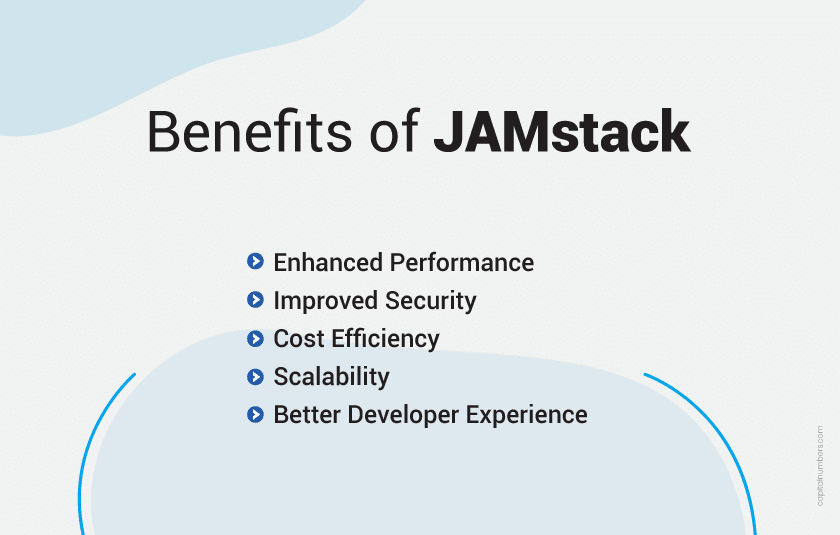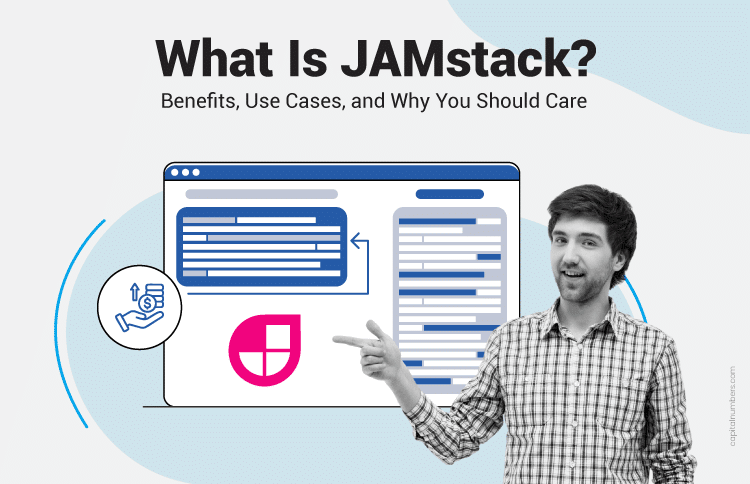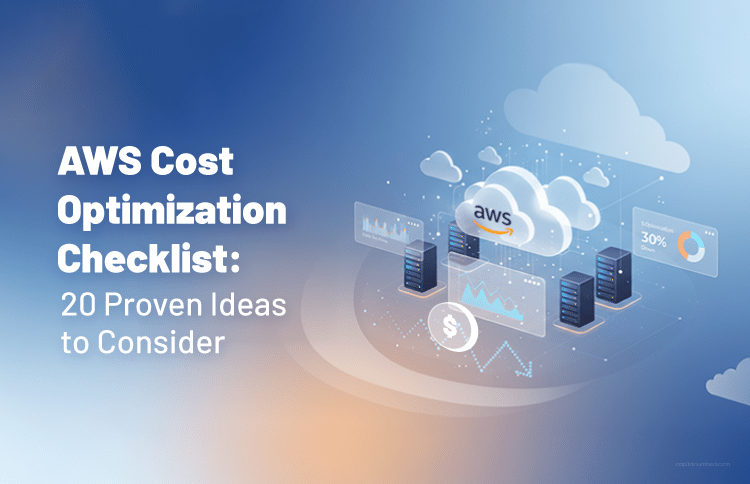What Is JAMstack? Benefits, Use Cases, and Why You Should Care
Table of Contents
In the evolving landscape of web development, architecture choices play a decisive role in shaping user experiences, performance benchmarks, and operational efficiency. One approach that has gained widespread attention in recent years is JAMstack. Short for JavaScript, APIs, and Markup, JAMstack represents a paradigm shift away from traditional monolithic web development, where applications are tightly coupled to backend servers and databases. Instead, JAMstack promotes decoupling, scalability.
What is JAMstack?
JAMstack stands for:
- JavaScript – handling dynamic functionalities client-side or via APIs.
- APIs – reusable services accessed over HTTPS (auth, payments, CMS, etc.).
- Markup – pre-rendered content served over CDNs.
Unlike traditional monolithic or server-rendered apps, JAMstack sites are built and deployed as static assets, then enhanced with APIs and JS.
At its core, JAMstack emphasizes pre-rendering and serving static assets, enhanced by dynamic functionality via APIs and JavaScript. This combination reduces reliance on complex server infrastructures and enables delivery of content through global content delivery networks (CDNs). The result is faster load times, stronger security, and simplified scaling, which are critical in an era where users expect instant interactions and businesses compete in highly digital marketplaces.
Key Characteristics of JAMstack
The JAMstack model is distinguished by several defining characteristics that set it apart from conventional development architectures. Firstly, it prioritizes decoupling the frontend from backend services. Websites are delivered as pre-rendered static files, while dynamic functionality such as authentication, payments, or content management is handled through APIs. This separation of concerns provides flexibility, as developers can choose best-in-class services without being locked into a single platform.
Another important trait of JAMstack is its reliance on CDNs for content delivery. Instead of fetching resources from centralized servers, assets are distributed across geographically diverse nodes, ensuring that users access data from the nearest location. This significantly improves performance and reduces latency. Moreover, by serving mostly static assets, JAMstack websites become inherently more secure, as the attack surface for malicious actors is reduced.
Finally, JAMstack fosters a developer-friendly environment. By focusing on static site generators, frameworks, and headless CMS platforms, the architecture streamlines workflows and integrates seamlessly with Git-based development pipelines. This allows for continuous integration and deployment (CI/CD), enabling rapid iteration and efficient collaboration.
Top 5 Benefits of JAMstack

The advantages of adopting JAMstack span multiple dimensions, from technical performance to business outcomes.
1. Enhanced Performance
Speed is one of the most critical factors for user retention and search engine optimization (SEO). With JAMstack, sites are pre-rendered and distributed via CDNs, resulting in lightning-fast load times. Since performance is no longer constrained by server-side rendering bottlenecks, users enjoy smooth navigation, even during peak traffic periods.
2. Improved Security
Traditional architectures often expose servers, databases, and middleware layers to vulnerabilities. JAMstack minimizes these risks by reducing dependencies on a central server. With fewer moving parts and APIs handling dynamic processes, the potential for attacks diminishes, enhancing overall security posture.
3. Cost Efficiency
Hosting static files on CDNs is significantly cheaper than maintaining full-fledged backend servers. Businesses can achieve better scalability at lower costs, paying only for the resources they use. This makes JAMstack particularly attractive for startups and organizations seeking cost-effective solutions without compromising on quality.
4. Scalability
Scaling monolithic applications often requires provisioning additional server resources and database capacity, which can be expensive and complex. In contrast, JAMstack websites scale effortlessly, as CDNs automatically handle traffic surges by serving cached content across multiple nodes. This elasticity is invaluable for businesses expecting fluctuating demand.
5. Better Developer Experience
By leveraging tools like Next.js, Gatsby, Hugo, or Nuxt, developers can focus on frontend innovation without being bogged down by backend maintenance. Git-based workflows, automated deployments, and integration with headless CMS platforms like Contentful or Sanity streamline the development lifecycle, fostering productivity and collaboration.
Use Cases of JAMstack
JAMstack is versatile and applicable to a wide range of projects, from simple landing pages to complex enterprise applications.
Marketing Websites and Landing Pages: For companies prioritizing speed and SEO, JAMstack is a natural fit. Marketing websites, campaign landing pages, and event microsites benefit from pre-rendering and static delivery, ensuring high performance and improved visibility on search engines.
E-commerce Platforms: Although e-commerce sites often require dynamic functionality such as inventory management and payment processing, JAMstack can handle these needs via APIs. By combining static product pages with API-driven cart and checkout systems, businesses can achieve fast, secure, and scalable online stores.
Content-Heavy Portals: Blogs, news websites, and documentation hubs thrive on JAMstack architecture. Integration with headless CMS solutions allows content editors to manage updates without developer intervention, while pre-rendered pages deliver superior performance to readers worldwide.
SaaS Applications: Software-as-a-Service platforms often require responsive, scalable, and secure interfaces. JAMstack provides the agility to integrate APIs for authentication, billing, and analytics while maintaining a streamlined frontend experience.
Nonprofit and Community Projects: Organizations with limited budgets can leverage JAMstack’s cost efficiency to create professional-grade websites without heavy infrastructure investments. The simplicity of deployment also makes it easier for distributed teams and volunteers to collaborate effectively.
Challenges and Considerations
While JAMstack offers numerous advantages, it is not without challenges. Dynamic features that require real-time interactions, such as personalized dashboards or complex data processing, may require additional architectural planning. Developers must carefully select APIs and services to ensure seamless integration and consistent user experiences. Furthermore, while the ecosystem of headless CMS and static site generators is growing, the learning curve may be steep for teams transitioning from traditional monolithic development approaches, as they must adapt to new workflows, tools, and deployment practices.
Another consideration is vendor lock-in. Relying heavily on third-party APIs for core functionality may introduce dependencies that could affect long-term flexibility or cost structures. Businesses must evaluate providers carefully and implement strategies to mitigate risks, such as maintaining fallback options or diversifying service providers.
Future of JAMstack
The future of JAMstack looks promising as businesses increasingly prioritize performance, scalability, and user experience. The rise of edge computing, serverless functions, and AI-powered personalization further expands the capabilities of JAMstack applications. Frameworks like Next.js and Remix are bridging the gap between static and dynamic functionality, offering hybrid approaches that cater to diverse project requirements.
As the ecosystem matures, JAMstack is expected to become a standard architecture for modern web development. Its alignment with DevOps practices, focus on developer experience, and ability to deliver superior outcomes position it as a compelling choice for organizations across industries.
Conclusion
JAMstack is more than just a technological trend; it is a strategic approach that aligns with the needs of today’s digital-first world. By decoupling the frontend from backend services, leveraging APIs for dynamic capabilities, and delivering pre-rendered content through CDNs, JAMstack offers a robust solution that enhances performance, security, and scalability. Its benefits span multiple domains, from marketing and e-commerce to SaaS and nonprofit initiatives.
While challenges exist, particularly in handling real-time interactions and managing third-party dependencies, the trajectory of JAMstack points to continued innovation and adoption. For businesses and developers alike, embracing JAMstack represents an opportunity to stay ahead in an increasingly competitive digital environment.
In summary, JAMstack embodies the principles of modern web architecture: simplicity, speed, and scalability. Its growing relevance underscores the importance of rethinking traditional approaches and embracing frameworks that align with the demands of users and businesses alike.


















